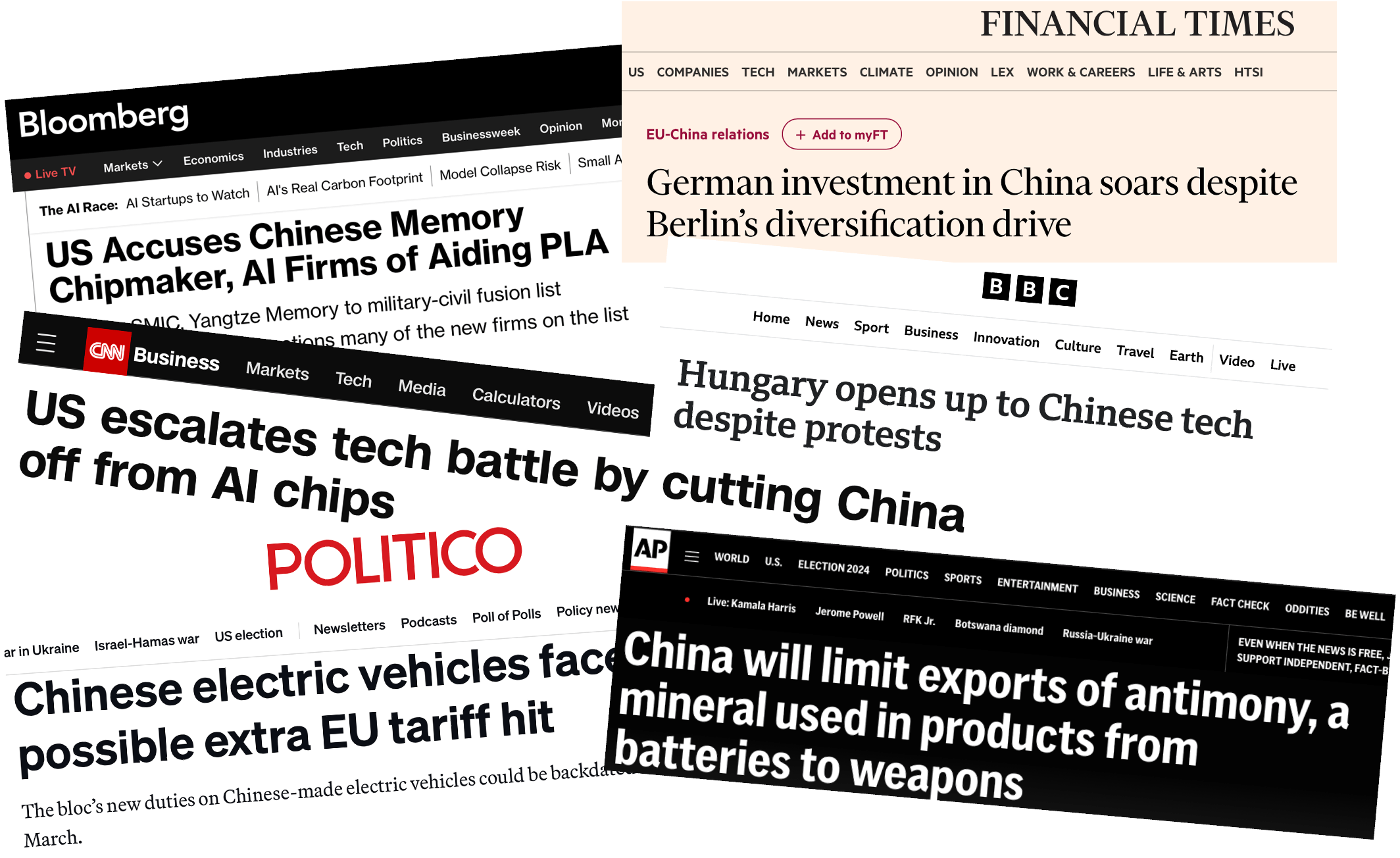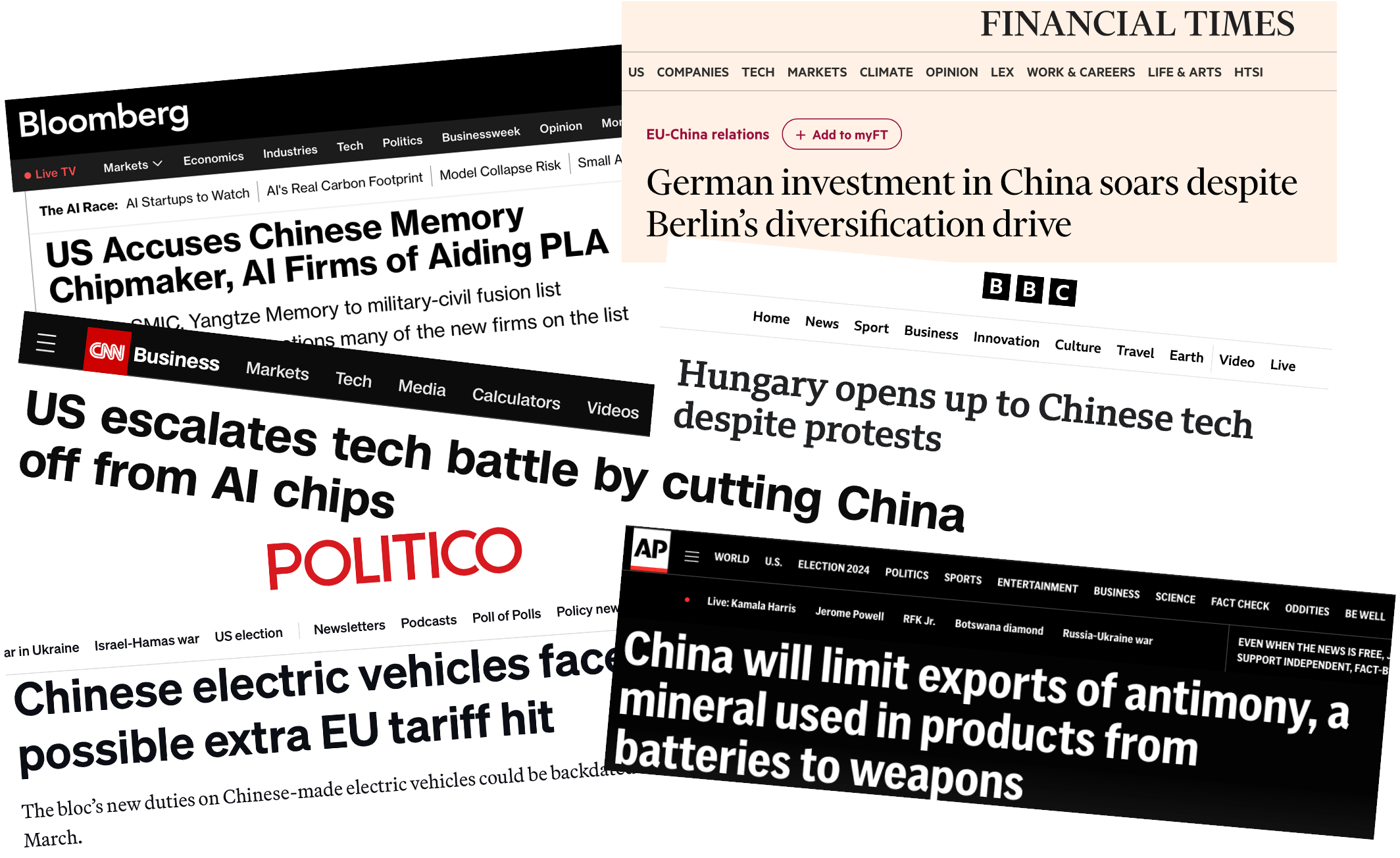Welcome to a/symmetric. We bring you news and analysis on the global industrial contest, where production is power and competition is (often) asymmetric. To receive issues over email, subscribe here.
This week:
- Making sense of China’s industrial system: on big picture context and frameworks
- Weekly Links: From PhD to startup C-suite, innovation vs. diffusion, robotaxi insights
Decoding China’s industrial system
There is no shortage of China news. That means plenty of data points with which to inform analyses. But it’s also easy to lose track of the incremental developments’ broader significance.
Consider these headlines, all published in the past year: US accuses Chinese memory chipmaker, AI firms of aiding PLA. China moves to limit exports of graphite. China to continue Canadian mining investments despite scrutiny. European nations compete for Chinese EV factories, jobs even as EU weighs tariffs. And so on.
How to interpret all this and thread a coherent narrative that goes beyond the immediate framing of US-China competition and “systemic rivalry”?
For any given news item, it can be difficult to assess what is overblown, overlooked, or underappreciated. What’s noise and what’s signal? Are the right questions being asked? In benchmarking countries’ strategies and capabilities, are apples-to-apples comparisons being made? Does the framing (e.g., “so-and-so tech is the latest front in the US-China contest”) actually reflect competitive dynamics, incentives, and strategic considerations?
The goal of a/symmetric is to try and make some sense of all this.
Piecing together a systems-level picture
A good place to start is by building a systems-level picture of China’s industrial machinery. This helps to situate a given technology, policy, and investment within the broader political and economic context. That context in turn shapes motivations, incentives, and constraints.
Without this scaffolding, efforts to compete with China would struggle to move beyond whack-a-mole. Huawei is a cautionary tale. Washington sanctioned the tech giant and all but declared victory, but failed to account for the deeper industrial ecosystem that supports and interacts with it. Today, Huawei not only boasts a breakthrough phone, but is critical to China’s buildout of AI computing centers and domestic carmakers’ autonomous driving initiatives.
This systems-level approach is useful for thinking about strategic emerging technologies. Take drones. US lawmakers are concerned about security threats posed by Chinese drone maker DJI. Less attention is being paid to China’s efforts in the low altitude economy.

(Source: SLON V KASHE/Unsplash)
But think: Beijing’s aspirations for an economy in the air, if successful, would grant cost advantages and market influence that far exceed any lost drone sales to the US. As we’ve written, targeting DJI but not the system of which it is part risks missing the swarm for the drones.
The same can be said for China’s internet satellite efforts. Yes, they may be a bid to rival Elon Musk’s Starlink. But as we wrote recently, “the simple head-to-head comparison belies a more complex set of dynamics…China is not simply looking to rival the US with its own satellite internet constellation. Rather, ‘China’s Starlink’ will plug into a wider telecommunications infrastructure, positioning Beijing to establish a dominant lead in the emerging 6G era.”
Teasing out analytical frameworks
Stare long enough at China’s industrial ecosystem, and telling analytical frameworks start to come into view. These frameworks can bring coherence to seemingly disjointed pieces of information.
For example: China cares about low-tech developments as much as it does high-tech ones. Seen through this lens, we can better understand China’s whole-of-industrial-chain approach to chasing future industries. It might also explain why China is exporting its entire EV industrial chain: not just EVs, but also raw materials for batteries and magnets, giant ships to ferry cars, and sensors and modules to power the internet of vehicles.

Huawei is powering AI computing centers across China. (Source: The Paper)
Another analytical lens is China’s approach to comparative advantage. Economic orthodoxy urges countries to specialize in certain exports, outsource production that can be done cheaply elsewhere, and import the rest. By contrast, Chinese economists and officials are decidedly more lukewarm on that idea.1 Factoring in this framework can shed light on, and add nuance to, China’s drive for technological self-sufficiency.
Here’s one more: China’s prioritization of technology applications. Understanding this provides clues to China’s AI strategy. It can also explain how Beijing views the relative merits of laboratory research and the industrialization of inventions. While the former is crucial, it is the latter that can be most readily leveraged for strategic market power.
An opaque, and open, system
China’s political system is famously opaque. But its policymaking process is surprisingly open, at least in relative terms.
Which other country of China’s clout publishes lists of its leading companies, sorted by sectors and sub-fields? Who else puts out lists of key new materials for commercialization at a level of detail like “4- to 6-inch low dislocation density sulfur-doped indium phosphide single crystal substrates”? Where else do we see lists of “supply chain architects”—flagship companies with outsize influence?
There’s plenty of news and information. The fun part is in finding connections, filtering out distractions, and extracting analytical value from readily available data. This is all a work in progress. The hope is that a/symmetric can chip away at that vast puzzle bit by bit. With luck, we might even decipher a small corner of the Chinese industrial system.
Weekly Links
️ From PhD to CEO. As the corporate research lab model has receded, startups founded by young academic researchers are filling the gap. (C&EN)
️ Diffusion vs. innovation. Jeffrey Ding argues that both the US and China’s “obsession to win the future” over-indexes on invention at the expense of application and adoption. Innovation, he writes, “only gets you so far. Without the humbler undertaking of diffusion—how innovations spread and are adopted—even the most extraordinary advances will not matter.” (Foreign Affairs)
️ Robotaxi insights. A lengthy interview in Chinese, summarized and translated by Taylor Ogan of Snowbull Capital, with the founder and CTO of China’s leading autononmous driving firm Pony.ai. (Tencent News, Twitter/X)
(Photo via Wuhan Municipal Government)




